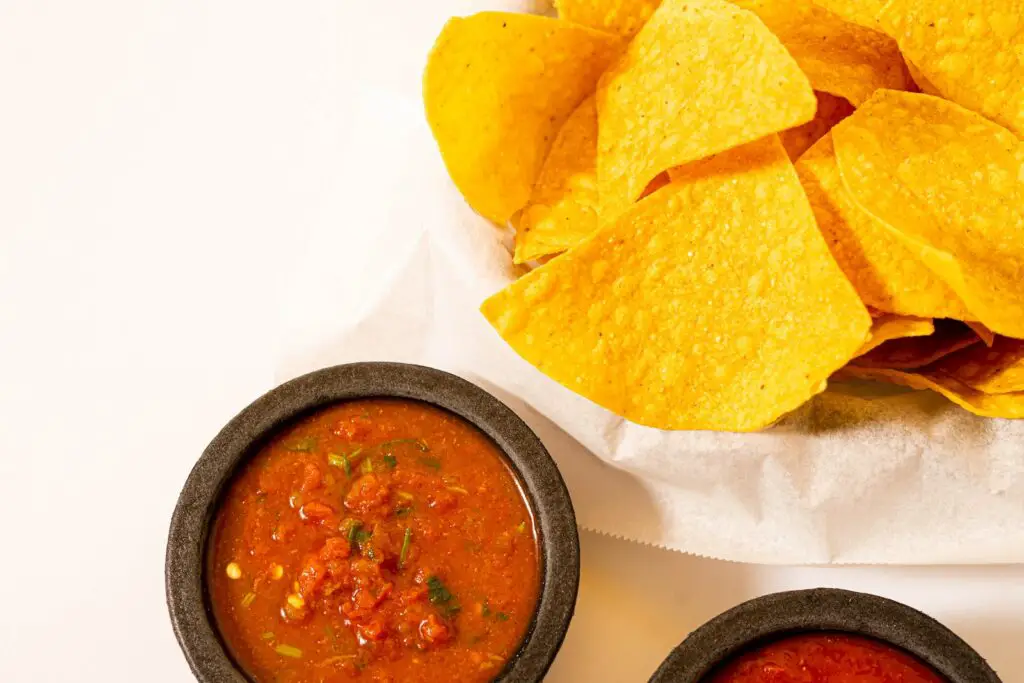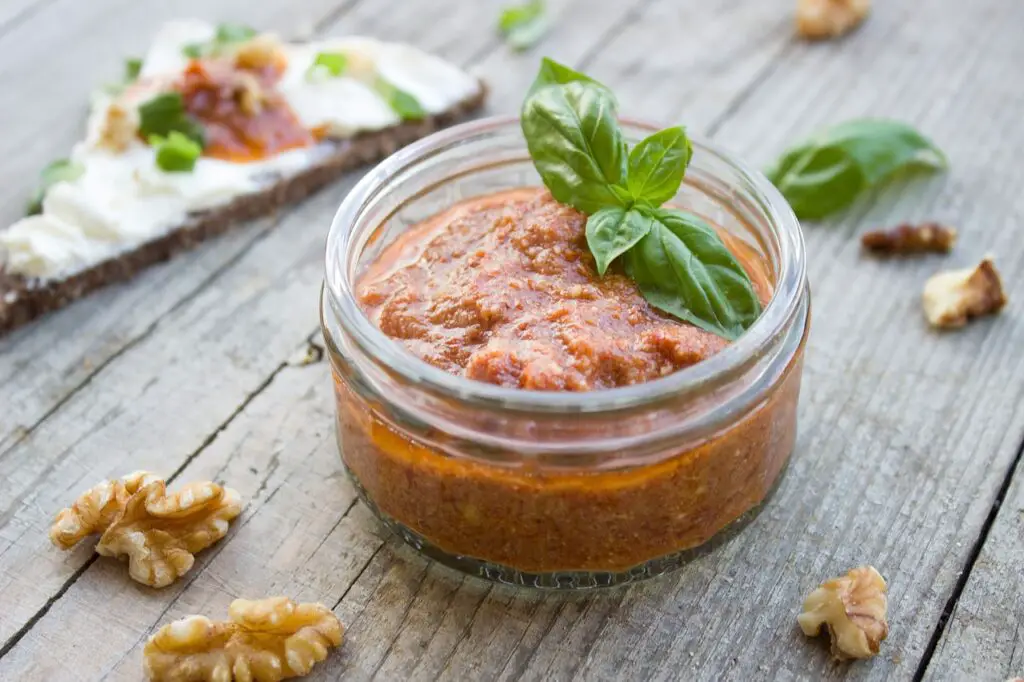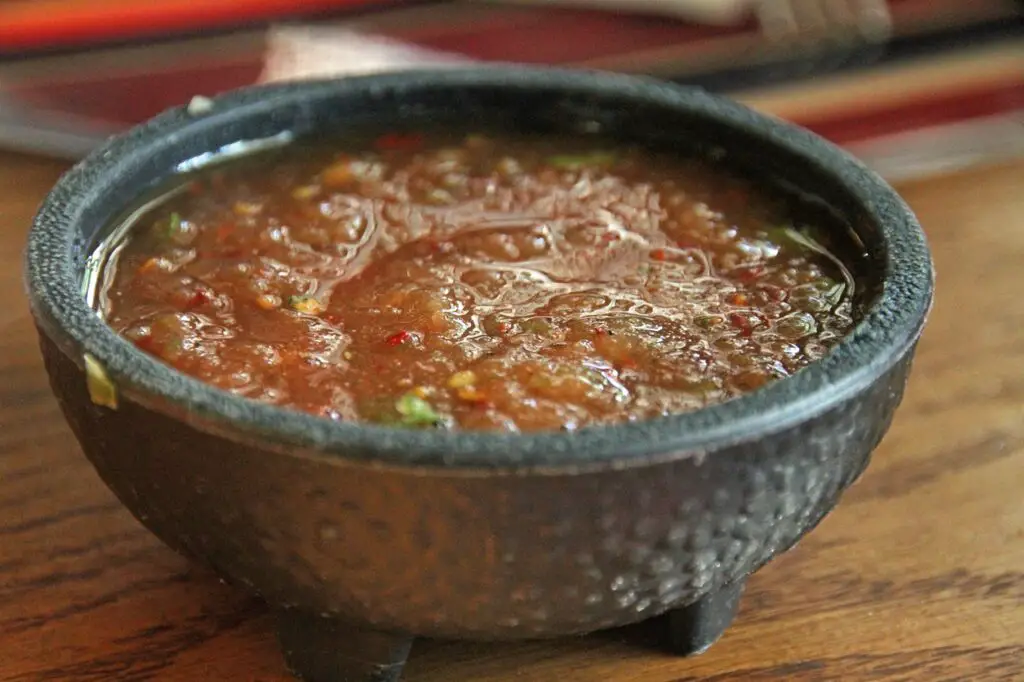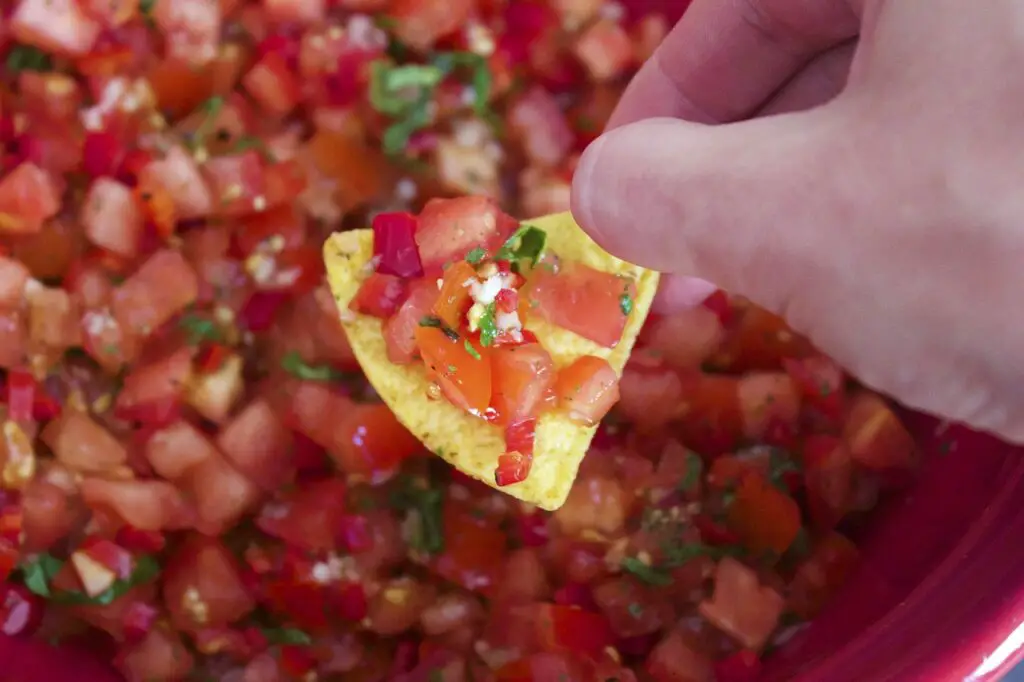
Salsa is a popular condiment that adds flavor and spice to many dishes. Whether you’re enjoying it with chips or using it as a topping for tacos, burritos, or other Mexican dishes, salsa is a staple in many households. However, it’s important to be able to tell if your salsa has gone bad, as consuming spoiled salsa can lead to food poisoning.
There are a few key indicators that can help you determine whether your salsa is still good to eat. One of the first things to look for is the appearance of the salsa. If it looks moldy or discolored, it’s likely that it has gone bad and should be discarded. Another thing to look for is the smell of the salsa. If it has a sour or unpleasant odor, it’s best to err on the side of caution and throw it away.
In addition to appearance and smell, it’s also important to consider the texture of the salsa. If it has become overly watery or has separated, it may no longer be safe to eat. By paying attention to these key factors, you can ensure that you’re consuming fresh and safe salsa every time you enjoy this popular condiment.
Table of Contents
Understanding Salsa

Salsa is a popular condiment that can be made at home or purchased from the store. It is typically made with a combination of tomatoes, peppers, onions, vinegar, cumin, sugar, and other seasonings. Salsa can be fresh or refrigerated, and there are many different types of salsa available, including picante sauce, hot sauce, and guacamole.
When it comes to determining whether salsa is bad, there are a few things to keep in mind. First, it is important to consider the ingredients used in the salsa. Tomatoes, peppers, and onions can all spoil over time, so it is important to check for any signs of spoilage, such as mold or a bad smell.
In addition to checking the ingredients, it is also important to pay attention to the texture and consistency of the salsa. If the salsa is watery or has separated, it may be a sign that it has gone bad. Similarly, if the salsa has a slimy or mushy texture, it is best to avoid it.
When making homemade salsa, it is important to follow a recipe and use fresh, high-quality ingredients. This can help ensure that the salsa is safe to eat and has a delicious flavor. Store-bought salsa should also be stored properly and consumed before the expiration date.
Overall, understanding salsa and its ingredients can help you determine whether it is safe to eat or has gone bad. By paying attention to the texture, consistency, and smell of the salsa, you can ensure that you are enjoying a fresh and delicious condiment.
How to Store Salsa

Storing salsa properly is essential to keep it fresh and safe to eat. Whether it’s store-bought or homemade, salsa should be stored in a cool, dry place away from direct sunlight and heat sources.
Unopened Salsa
If the salsa is unopened, it can be stored in the pantry or any cool, dry place. Make sure to check the label for any specific storage instructions. Most store-bought salsa is shelf-stable and sold unrefrigerated.
Opened Salsa
Once the jar of salsa is opened, it should be stored in the refrigerator. Transfer the salsa into an airtight container before storing it in the fridge. This will help to prevent spoilage and keep the salsa fresh for longer.
Homemade Salsa
If you’ve made homemade salsa, it’s best to consume it within a few days. Store it in an airtight container in the refrigerator to keep it fresh.
Fresh Salsa
Fresh salsa should be consumed within a day or two of making it. Store it in an airtight container in the refrigerator to keep it fresh.
Refrigerated Salsa
If you’ve purchased refrigerated salsa, make sure to keep it refrigerated at all times. Check the label for any specific storage instructions and consume it before the expiration date.
In summary, storing salsa properly is crucial to keep it fresh and safe to eat. Store unopened salsa in a cool, dry place and opened salsa in the refrigerator. Transfer salsa to an airtight container before storing it in the fridge to prevent spoilage. Homemade and fresh salsa should be consumed within a few days of making it.
Signs of Spoilage in Salsa

Salsa is a popular condiment that can add flavor and spice to any dish. However, just like any other food item, salsa can go bad and become dangerous to consume. Here are some signs to look out for to determine if your salsa has spoiled:
Smell
One of the easiest ways to tell if your salsa has gone bad is by smelling it. If the salsa has an unpleasant odor or smells sour, it is likely that it has spoiled.
Mold
Mold growth is a clear sign that your salsa has gone bad. If you see any white powdery-looking substance or mold in your salsa, do not consume it.
Color
Salsa should have a vibrant color. If you notice any discoloration or a change in color, it could be a sign of spoilage.
Taste and Flavor
Spoiled salsa can have a bitter or off taste. If your salsa tastes different than usual or has a strange flavor, it may have gone bad.
Texture
A change in texture can also indicate spoilage. If your salsa has become watery or has a slimy texture, do not consume it.
It is important to note that consuming spoiled salsa can lead to food poisoning. Symptoms of food poisoning can include vomiting, diarrhea, and stomach cramps. To prevent spoilage, store your salsa in a cool and dry place, away from light. Check the expiration date and look for preservatives to ensure the quality of your salsa. Always use your senses and do a sniff test before consuming salsa to avoid any potential health risks.
Shelf Life of Salsa
Salsa is a popular condiment that is typically made with tomatoes, onions, peppers, and various spices. It is a versatile ingredient that can be used in a variety of dishes, from tacos to scrambled eggs. However, like any food product, salsa can go bad over time.
The shelf life of salsa depends on a few factors, including whether it is homemade or store-bought, whether it is refrigerated or not, and whether it is unopened or opened. Generally, store-bought salsa has a longer shelf life than homemade salsa because it contains preservatives.
If salsa is unopened and stored in a cool, dry place, it can last for several months beyond the expiration date on the jar. However, once the jar is opened, the salsa should be refrigerated and used within a week or two. If the salsa appears to have mold or an off smell, it should be discarded.
Canned salsa has a longer shelf life than fresh salsa because it is cooked and sealed in a can. It can last for up to two years beyond the best by date on the can if stored in a cool, dry place. Once opened, canned salsa should be refrigerated and used within a week or two.
Homemade salsa has a shorter shelf life than store-bought salsa because it does not contain preservatives. It should be refrigerated and consumed within a few days. Fresh salsa, which is made with raw ingredients, should be consumed within a day or two of being made.
In summary, the shelf life of salsa depends on whether it is homemade or store-bought, whether it is refrigerated or not, and whether it is unopened or opened. It is important to check the expiration or best by date on the jar or can and to refrigerate opened salsa promptly to ensure its freshness and safety.
Freezing and Thawing Salsa
Freezing salsa is a great way to preserve it for future use, but it can also affect the texture and taste of the salsa. When salsa is frozen, the water in the ingredients expands, which can cause the salsa to become watery and lose its flavor. Here are some things to keep in mind when freezing and thawing salsa:
- Can You Freeze Salsa? Yes, you can freeze salsa. However, it is important to note that not all types of salsa freeze well. Salsas with high water content, such as fresh pico de gallo, may become mushy when thawed. Cooked salsas, such as those made with roasted vegetables, tend to freeze better.
- How to Freeze Salsa: To freeze salsa, transfer it to an airtight container or freezer bag and remove as much air as possible before sealing. Label the container with the date and store it in the freezer for up to 6 months.
- Thawing Salsa: When thawing salsa, it is best to do so in the refrigerator overnight. This will allow the salsa to thaw slowly and evenly, which will help preserve its texture and flavor. If you need to thaw the salsa quickly, you can place the container in a bowl of cold water. Do not use hot water or the microwave, as this can cause the salsa to become watery and lose its flavor.
- Using Thawed Salsa: Once salsa has been thawed, it should be used within a few days. Do not refreeze thawed salsa, as this can further affect its texture and flavor.
In summary, while salsa can be frozen, it is important to consider the type of salsa and its water content before doing so. When thawing salsa, it is best to do so slowly in the refrigerator to preserve its texture and flavor.
Understanding Food Poisoning from Salsa
Salsa is a popular condiment that is enjoyed by many people around the world. However, it is important to understand that salsa, like any other food, can go bad and cause food poisoning.
Food poisoning is a common illness that is caused by consuming contaminated food. The symptoms of food poisoning can include diarrhea, vomiting, and in severe cases, death. Salsa can be contaminated with bacteria, such as Clostridium botulinum, which can produce botulism toxin and cause botulism, a serious form of food-borne illness.
It is important to note that not all salsa that is contaminated with bacteria will cause food poisoning. The risk of food poisoning depends on a number of factors, including the type and amount of bacteria present in the salsa, as well as the immune system of the person consuming the salsa.
To reduce the risk of food poisoning from salsa, it is important to practice good food safety habits. This includes washing hands before handling food, keeping salsa refrigerated at all times, and avoiding cross-contamination by using separate utensils for different foods.
In summary, while salsa is a delicious condiment, it is important to be aware of the risks of food poisoning associated with consuming contaminated salsa. By following good food safety practices, individuals can reduce their risk of contracting a food-borne illness.
Frequently Asked Questions
When it comes to salsa, there are a lot of questions that people tend to ask. Here are some of the most common ones:
Does Salsa Go Bad?
Yes, salsa can go bad. Like any other food, salsa has a shelf life, and it will eventually spoil if it is not stored properly or consumed within a certain amount of time.
How Long Does Salsa Last?
The shelf life of salsa depends on a variety of factors, including the ingredients used, the storage conditions, and whether or not the salsa has been opened. In general, unopened salsa can last for several months in the pantry, while opened salsa should be consumed within a week or two if stored in the refrigerator.
Can You Freeze Salsa?
Yes, you can freeze salsa. However, it is important to note that freezing can change the texture and flavor of the salsa, so it may not be as good as fresh salsa. If you do decide to freeze salsa, make sure to store it in an airtight container and use it within a few months for best results.
How to Tell if Salsa is Bad?
There are several signs that salsa has gone bad, including:
- Mold or discoloration
- Foul odor
- Off taste or texture
- Bubbling or fizzing
If you notice any of these signs, it is best to throw the salsa away and not consume it. It is always better to be safe than sorry when it comes to food safety.
Overall, it is important to store salsa properly and consume it within a reasonable amount of time to ensure that it is safe and delicious to eat.